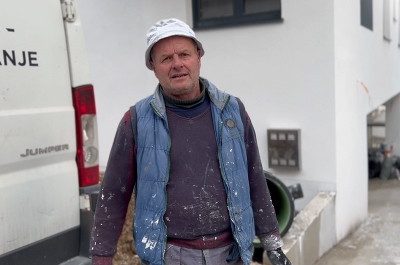According to him, Croatia could say goodbye to high inflation as early as next year – if the inflation projection of two percent is achieved, it could be considered “defeated.”
Two Percent – The Target and Natural Inflation Rate
Minister Primorac emphasized that an inflation rate of around two percent aligns with the natural or target inflation level that central banks do not aim to suppress, but rather accept as healthy for economic development. The European Commission, in its forecasts, expects inflation in Croatia to fall to this target level in 2026, following 4% in 2024 and 3.4% in 2025.
The reduction in inflation has been primarily driven by the decrease in food and service prices – two categories that had heavily burdened household budgets in recent years.
Economic Growth Above the European Average
Another positive signal comes from expected economic growth. Croatia recorded a 3.9% growth in 2024, and a 3.2% growth is expected for this year. Although slightly lower, this growth still significantly exceeds the European Union average, which the Government sees as confirmation of the soundness of its economic policies.
Primorac points out that growth is primarily driven by investments – both in the private and public sectors – with special emphasis on post-earthquake reconstruction and infrastructure modernization. In addition, private consumption is increasing, which further stimulates economic activity but may also contribute to short-term inflationary pressures.
Digital Transformation of the Tax System
Regarding tax policy, the minister announced stability – no significant changes are expected by the end of the year. However, the Ministry of Finance is focused on digitalization. Three key projects are underway: the establishment of a new population register (functional by June 2026), Fiscalization 2.0, and the digital transformation of the Tax Administration. The goal of these projects is to create a more efficient, transparent, and modern tax system.
Entrepreneurial Initiatives: Lower Taxes and Greater Competitiveness
On the other hand, AmCham presented proposals for further tax relief that could enhance Croatia’s competitiveness. Suggestions include raising the non-taxable income threshold to 970 euros, capping contributions for health insurance, and gradually reducing income tax rates – first from 30% to 20%, and then to 10%.
AmCham’s Executive Director Andrea Doko Jelušić also highlighted that the business climate in Croatia is extremely favorable, especially in comparison with Central and Eastern European countries. A stable macroeconomic framework and a solid credit rating further support Croatia’s attractiveness as an investment destination, although challenges remain – primarily a labor shortage and high labor costs.
Balancing Growth and Stability
From both the Government’s and the business community’s perspectives, Croatia is on the path to stable economic recovery and growth. If the 2% inflation expectation in 2026 is realized, it will be a clear confirmation of successful balancing between economic growth and macroeconomic stability. In this light, Croatia has the opportunity to strengthen its position as a desirable place to live and do business in the European context through smart reforms and investments.

 Croatia
Croatia Bosnia and Herzegovina
Bosnia and Herzegovina Serbia
Serbia Crna Gora
Crna Gora North Macedonia
North Macedonia Ukraine
Ukraine Albania
Albania Kosovo
Kosovo Austria
Austria Deutschland
Deutschland Switzerland
Switzerland









